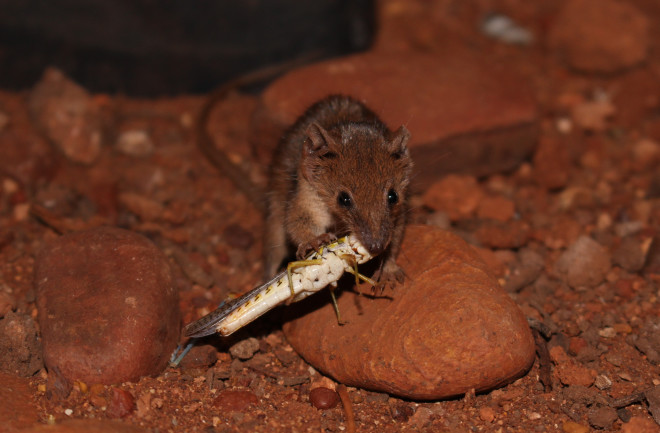It resembles a mouse with big round ears and the tiniest little pouch to hold its young. But this isn’t your average rodent, in fact, it’s the world’s smallest marsupial. Yet, it should never be underestimated. The long-tailed planigale is an itty-bitty but fierce carnivorous mammal found in Australia and Papua New Guinea.
Linette Umbrello is a biologist at the Western Australian Museum who has spent her career studying the planigale, a tiny creature that makes its home down under. The smallest species can reach about the size of half a mouse, and the largest about three times that.
There are currently seven recognized planigale species, and more are being discovered each year. Last year alone, Umbrello and her team discovered and published on two new varieties of planigales: The orange-headed Pilbara planigale known as Planigale kendricki and the cracking-clay Pilbara planigale known as Planigale tealei.
“I’ve always been most interested in the smallest marsupials — they’re super feisty, and they deserve some attention,” Umbrello says.
The Long-Tailed Planigale is a Bloodthirsty Carnivore
Don’t let its size fool you, the planigale doesn’t want to be your friend. This tiny carnivore is fierce and skilled at surviving where other creatures cannot —in dry grasslands and deserts. It feeds off of insects and small lizards or whatever it can kill and fit in its tiny tummy. These insectivores love centipedes, spiders, grasshoppers, moths, and beetles, which they grab with their caramel-colored claws, often under the darkness of night.
It’s not just their size that makes the planigale special, it’s the shape of their head. “Their heads are really, really flat from the nose to the back of the head, and that allows them to squish themselves into tiny crevices to hide from predators,” says Umbrello. To avoid the harsh sun of Australia’s desert grasslands, they hide in cracks formed in the arid desert.
Brought over by settlers in the 1800s to hunt rats on ships, feral cats thrived, living on an island full of species that were not adapted to escape them. The planigale has had the same fate and often falls prey to cats and foxes. “They decimated the native marsupials because they didn’t know how to hide from them properly,” says Umbrello.
Read More: Why Are We So Afraid of Mice and Other Rodents?
A Marsupial Mouse with the Pouch to Prove It
Nocturnal and on the move, they’ve long been called marsupial mice, and they have the signature marsupial pouch to prove it. Females birth — on average — six babies per litter, carrying them around in their pouch for a few months before they’re able to survive on their own in the wild. Most babies are weaned from their moms within four months.
While we don’t know a whole lot about their conservation status because they haven’t been given the attention of some of the better-known marsupials like kangaroos, wombats, and koalas, researchers think that the two newly discovered species are probably quite common.
Some of the other species, however, are more restricted due to their smaller habitats, which makes them rarer. Still, their conservation status is yet unknown due to habitat degradation and introduced predators like foxes and feral cats.
The planigale is another fascinating mammal that Umbrello says makes the continent quite special. From quokkas to Tasmanian devils to wombats and now this tiny, feisty carnivore, Australia is home to so many creatures unique to the continent.
Read More: Instead of Dozing Off, These Marsupials Are Too Busy… Getting Busy
Article Sources
Our writers at Discovermagazine.com use peer-reviewed studies and high-quality sources for our articles, and our editors review them for accuracy and trustworthiness. Review the sources used below for this article:
Linette Umbrello. Biologist at the Western Australian Museum
QUT School of Biology and Environmental Science. Tiny carnivorous critters: Researchers discover two new Aussie mammals
Australian Museum. Narrow-nosed Planigale

